CBSE Class 7 Social Science Chapter 7 The Gupta Era: An Age of Tireless Creativity Worksheet - Free Download
| Table of contents |

|
| Multiple Choice Questions (MCQs) |

|
| Fill in the Blanks |

|
| Very Short Answer Questions |

|
| Short Answer Questions |

|
| Match the Following |

|
Multiple Choice Questions (MCQs)
Q1: What is the Gupta Era known for?
a) The rise of the Maurya Empire
b) Achievements in art, literature, and science
c) The fall of the Harappan civilization
d) The start of Islamic rule in India
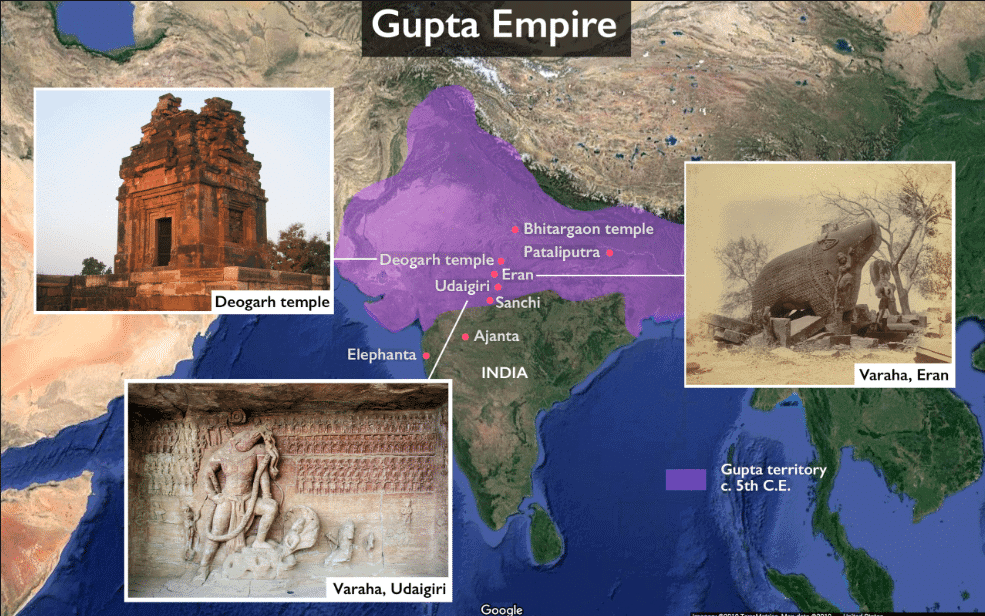 Gupta Empire
Gupta Empire
Q2: Who was the father of Chandragupta II?
a) Samudragupta
b) Samudraka
c) Ashoka
d) Dhanananda
Q3: What was the name of the Gupta ruler who performed the Ashvamedha Yajña?
a) Chandragupta II
b) Samudragupta
c) Ashoka
d) Harisena
Q4: Which foreign traveler visited India during the Gupta period?
a) Hiuen Tsang
b) Faxian
c) Marco Polo
d) Ibn Battuta
Q5: What was a significant contribution of Āryabhaṭa in the Gupta period?
a) He wrote about architecture and sculpture.
b) He made advances in mathematics and astronomy.
c) He created the first coinage system.
d) He founded the Nalanda University.
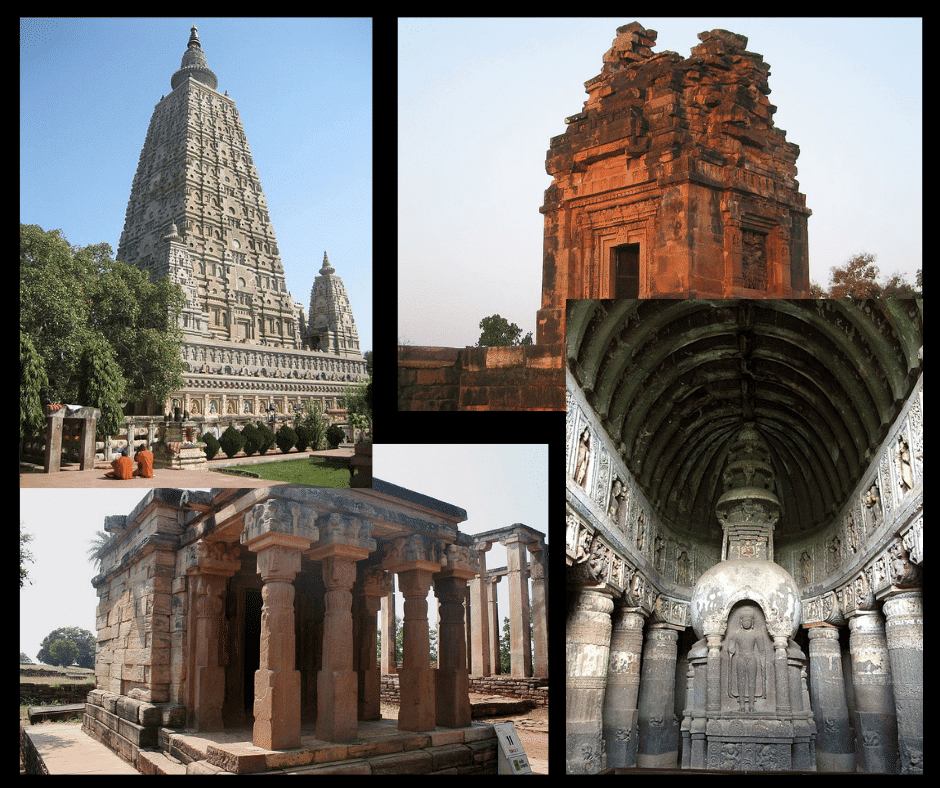 Temples of Gupta Empire
Temples of Gupta Empire
Q6: What was the main trade commodity of the Gupta Empire?
a) Spices and textiles
b) Coins and gold
c) Iron and steel
d) Silk and porcelain
Q7: Which Gupta king is known for promoting the arts and literature, and for ruling over the empire at its height?
a) Chandragupta I
b) Samudragupta
c) Chandragupta II
d) Harisena
Q8: What was the primary purpose of the Iron Pillar in Delhi?
a) To honor the Mauryan Empire
b) To commemorate military victories
c) To demonstrate Gupta advancements in metallurgy
d) To mark the boundaries of the Gupta Empire
Q9: Which language flourished during the Gupta period and became central to literature and philosophy?
a) Prakrit
b) Sanskrit
c) Pali
d) Tamil
Q10: Which Gupta ruler was particularly noted for his patronage of scholars and artists?
a) Samudragupta
b) Chandragupta II
c) Harisena
d) Kumaragupta
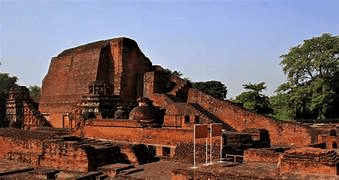 Nalanda University
Nalanda University
Fill in the Blanks
Q1: The Gupta Empire is often referred to as the __________ Age due to its cultural and intellectual achievements.
Q2: The Gupta rulers used __________ to expand their empire, combining military conquests and alliances.
Q3: The __________ Pillar in Delhi, dating back to the Gupta period, showcases the empire’s achievements in metallurgy.
Q4: __________ was a famous Chinese traveler who visited India during the Gupta period and wrote about his experiences.
Q5: The Gupta period is noted for advancements in __________, with scholars like Āryabhaṭa making significant contributions.
Q6: The Gupta rulers were also known for their patronage of __________, with scholars like Kālidāsa writing famous literary works.
Q7: Gupta administration was efficient, with local leaders receiving __________ to manage their territories.
Q8: __________, a famous work by Varāhamihira, covers topics like astrology, weather forecasting, and architecture.
Q9: The Gupta rulers supported __________ by funding institutions like Nālandā University.
Q10: The Gupta period saw significant progress in __________, with the development of beautiful sculptures and paintings in places like Ajanta and Udayagiri.
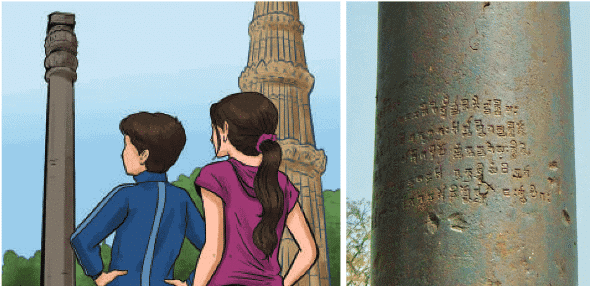 Iron Pillar, Mehraulli, Delhi
Iron Pillar, Mehraulli, Delhi
Very Short Answer Questions
Q1: What was the capital of the Gupta Empire?
Q2: What is the significance of the Iron Pillar in Delhi?
Q3: Who was Faxian?
Q4: What was the primary language used for literature during the Gupta period?
Short Answer Questions
Q1: How did the Gupta Empire support art and culture?
Q2: What was the role of diplomacy in the Gupta Empire?
Q3: How did the Gupta Empire impact mathematics and astronomy?
Q4: Why is the Gupta period called the Classical Age?
Q5: What was the significance of Nālandā University?
Match the Following
(Match Column A with the correct option in Column B)
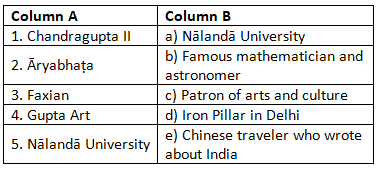
For Worksheet Solutions, go to Worksheet Solutions: The Gupta Era: An Age of Tireless Creativity
|
1 videos|107 docs
|
FAQs on CBSE Class 7 Social Science Chapter 7 The Gupta Era: An Age of Tireless Creativity Worksheet - Free Download
| 1. What were the major contributions of the Gupta Era in the field of art and architecture? |  |
| 2. How did the Gupta Empire influence science and mathematics? |  |
| 3. Who were some prominent figures of the Gupta Era, and what were their contributions? |  |
| 4. What role did religion play during the Gupta Era? |  |
| 5. What factors led to the decline of the Gupta Empire? |  |















